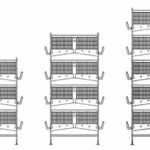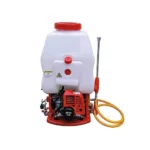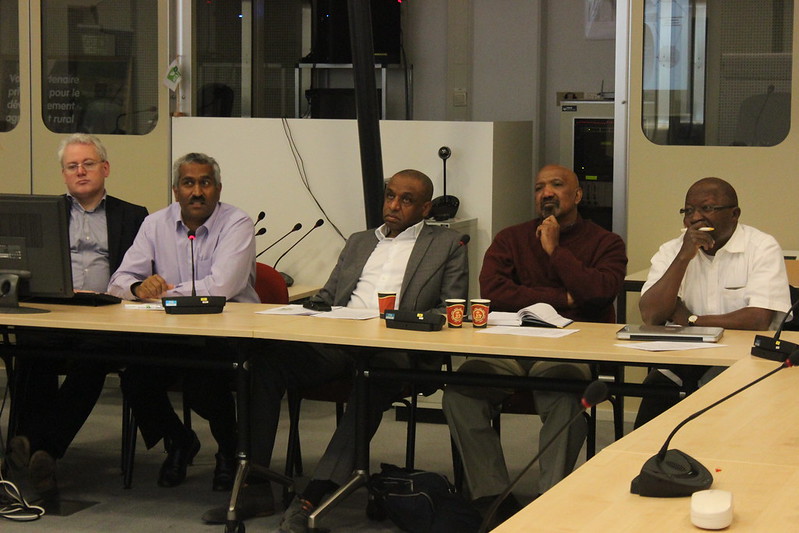Manufacturers of agricultural machines see ‘very strong’ market potential in Africa
- According to the survey, 43% of manufacturers believe that – already today – Africa is ‘very important’ or ‘absolutely essential’ for their company’s business.
- Looking at the sales perspectives for agricultural machines over the next 5 to 15 years, 3 out of every 4 respondents (73.6%) believe the African market to hold ‘great’ or even ‘very strong’ market potential.
- However, notwithstanding this positive outlook, agricultural machinery manufacturers continue to face a number of major structural challenges when doing business in Africa.
When asked about the most important factors that would need to improve in order to unleash future investments to promote successful mechanization efforts and develop effective local distribution and after-sales networks for agricultural machinery in African countries, manufacturers underlined the need for:
- a more reliable political and regulatory framework;
- a functioning banking system to improve access to finance; and
- a greater number of technology centres and demonstration farms to promote training and skills development for farmers handling machinery.

More than half of the respondents therefore believe that public-private partnerships (PPPs) hold the key to address these challenges, viewing them as a ‘very important’ or ‘absolutely essential’ tool in the quest to develop sustainable mechanization in Africa.
‘In light of a rapidly growing demand for food in Africa fueled by population growth, we believe a new approach is needed to promote sustainable mechanization and enhance agricultural productivity. Such an approach should combine reinforced institutional support with greater cooperation with the private sector with the help of PPPs. We are pleased to see that manufacturers share this view, as we are about to explore the development of a new and dedicated PPP mechanism for mechanization in Africa’, said Simeon Ehui from the Agricultural Global Practice from the World Bank.
‘If we want agricultural mechanization to succeed in Africa, all concerned – be they farmers, supporters, planners or policymakers – need to work together. The Alliance looks forward to collaboration among manufacturers, the World Bank and interested stakeholders to explore the development of new PPP approaches that promote tailored, inclusive and integrated mechanization in Africa.’, said Selami Ileri, Chair of the Agrievolution Alliance.
The survey was completed by 171 companies from 16 countries representing the main suppliers of tractors and other agricultural machinery in the world. The 16 countries include: Austria, Brazil, Canada, China, France, Germany, Hungary, India, Italy, Japan, Korea, South Africa, Turkey, Ukraine, United Kingdom and United States.
Related:
21 January 2016. Istanbul, Turkey. AGRI EVOLUTION 2016:FIFTH WORLD SUMMIT ON AGRICULTURE MACHINERYFarm Machinery to Feed the World: Bridging agricultural sustainability with innovation and technology (In conjunction with Agro Eurasia International Agriculture and Agriculture Machinery Fair).
Agrievolution Summits are held in conjunction with global agriculture industry events at rotating world locations approximately every 18 months in order to share information, bring focus to global industry initiatives and collaborate with world agriculture leaders on relevant issues. Summit participants include Alliance partners, invited associations, government officials, academia, top level farmers and other agricultural stakeholders.
About the Agrievolution Alliance:Representing more than 6000 agriculture equipment manufacturers around the world, the Agrievolution Alliance was established in April of 2012 to facilitate collaboration within the agriculture equipment manufacturing industry among important agricultural regions of the world. It was launched on the shared belief that in today’s global agricultural economy, it is crucial that current issues and future challenges be viewed from a global perspective and be addressed on a global basis (www.agrievolution.com)
About CEMA – European Agricultural MachineryCEMA is the European association representing the agricultural machinery industry. The industry represented by CEMA includes 4,500 manufacturers of agricultural equipment employing directly 135,000 persons and indirectly in the distribution and service network another 125,000 persons. The companies are mainly small and medium-sized manufacturers according to the EU definition and in 2014 had a total turnover of 26billion euro (www.cema-agri.org)
















